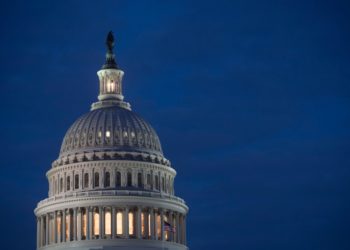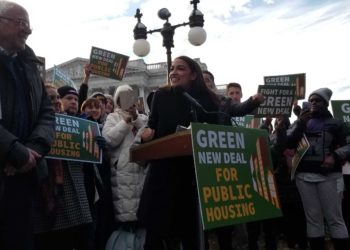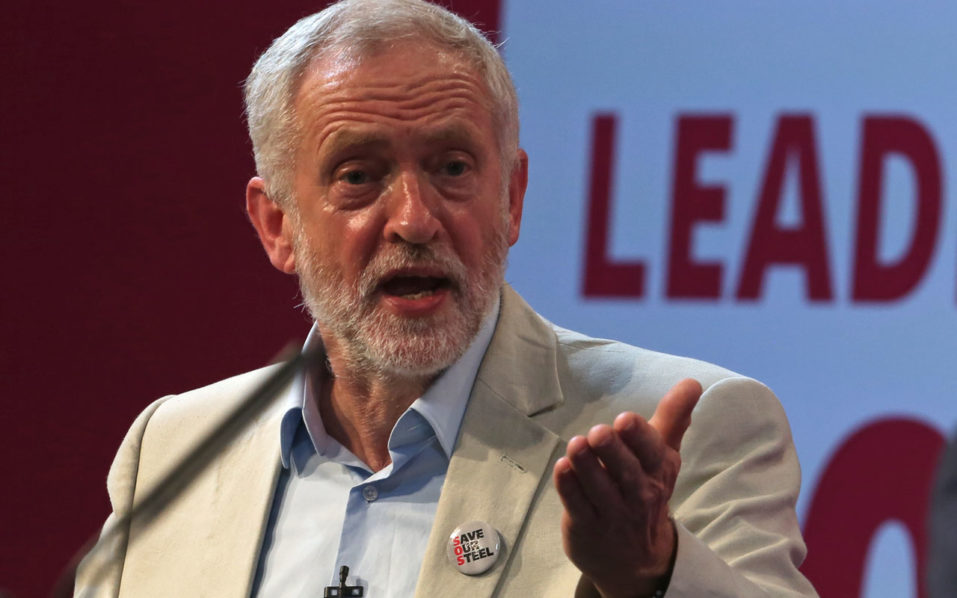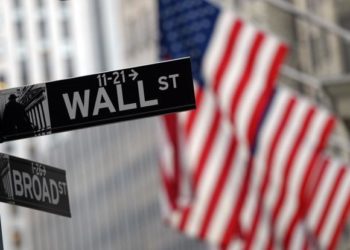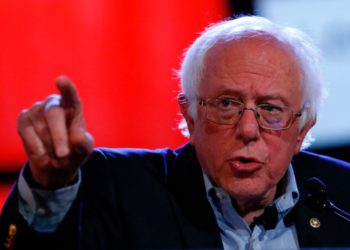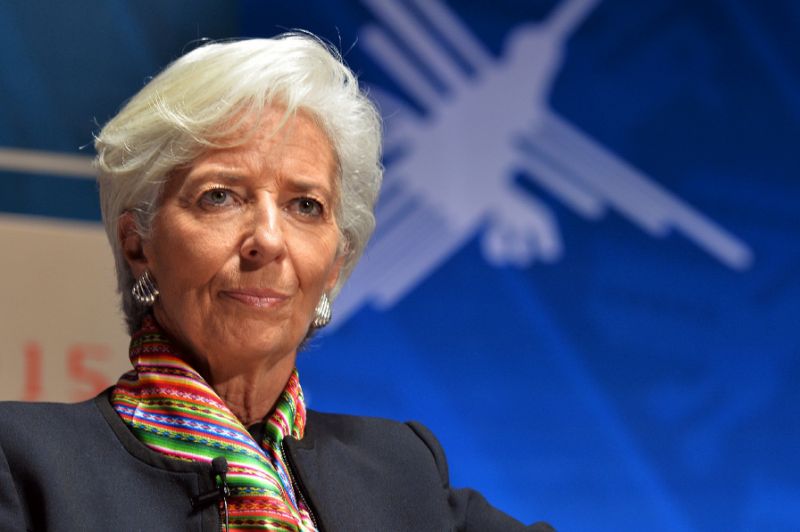When American politicians propose new policies, the first question they often receive is how they intend to pay for it.
According to Stephanie Kelton, a professor of public policy and economics at Stony Brook University, the U.S. government can always afford a new program in financial terms because it can issue currency without taxing or borrowing.
But won’t that cause inflation? Not necessarily, she says.
Kelton, who served as chief economist to the U.S. Senate Budget Committee in 2015, is a leading proponent of a controversial emerging school of thought called Modern Monetary Theory that’s challenging some of the most basic assumptions that make up the country’s prevailing economic dogma.
The foundation of MMT revolves around the fact that the U.S. government issues its own currency and therefore does not have the same financial constraints as a household or a business.
While that may seem like a banal observation, Kelton and her peers argue that acknowledging that fact has profound implications for economic policy.
For now, MMT remains somewhat of an insurgent ideology. But in recent years, the school of thought has increasingly made headway into mainstream political discourse. Kelton served as an adviser to Bernie Sanders 2016 presidential campaign, and earlier this year, MMT was cited by high-profile Congresswoman Alexandria Ocasio-Cortez.
In an interview with The Globe Post this week, Kelton broke down what exactly MMT is all about, and how it could transform public policy in years to come.
Q. What is modern monetary theory all about fundamentally and what are some of the core tenants of it?
Kelton: I would say that MMT is about recognizing that the monetary regime under which a country operates matters. So countries like the U.S. – those that float their currencies, that don’t borrow in a foreign currency – can never run out of money and they can never be forced to default on their debt.
So what that means is that a country like the U.S. doesn’t need to tax or borrow in order to get the currency in order to spend. So it’s never about whether you can afford a program in financial terms. You always can. It’s about whether spending to fund your program will cause an inflation problem.
That can happen if you’re trying to do big ambitious stuff and the economy doesn’t have the people and the machines, the factories or the concrete and the steel to absorb that spending. Then you could trigger an inflation problem and MMT recognizes that it’s our real resources that are constrained not our financial resources.
Q. In some ways that’s in direct contrast to this common notion that’s out there of running the government like a business. So MMT is in contrast with that idea, right?
Kelton: Oh, fundamentally yes. Businesses are financially constrained. They have to turn a profit in order to remain viable and that means that they have to earn money from sales and they have to earn enough to cover all the costs of production or else they end up running at a loss. And then they probably won’t be around for very long.
Businesses can run out of money. They can go broke. The government is nothing like a household or private business. The federal government is the source of our currency. As the St. Louis Federal Reserve put it, “the U.S. government is the sole manufacturer of dollars.” And so what that means is that the government is a monopolist and the monopolist can’t run out of the thing that it and only it monopolizes. And in this case that’s the U.S. dollar.
If the government tried to act like a private business collecting more dollars than it spends, it just leaves the rest of us with fewer dollars to save or spend into the economy. And that’s a pretty silly thing to do if you want healthy businesses and a healthy economy.
“MMT is advancing a different way of thinking about money and a different way of thinking about the role of taxes and deficits and debt in our economy.”
Q. There’s a lot of concern about the national debt in political discourse. You see the number $21 trillion and it seems really scary. And people often frame the issue in terms of stealing from future generations and things along those lines. What do you think are some of the biggest misunderstandings or misconceptions that are commonly held about the national debt?
Kelton: Well there are many. And you’re right, there is a lot of bad framing around the national debt. First the word itself, “debt” is bad framing. The national debt doesn’t carry the same burdens as the debt that you or I might have. So my car loan is a burden for me and my mortgage and my credit card are burdens for me each month. I have to use some of my income to pay back a portion of those loans. And so that leaves me with less money to spend on other things that I want.
But the federal government is different and its debt is different. The government can always pay its bills and spend more on other things at the same time. Remember, it can’t run out of money. The limit for the currency issuer – for the monopolist – is inflation not the debt. So if the debt goes up because the government decides to modernize and repair our crumbling infrastructure. Then future generations will inherit better infrastructure and they’ll also inherit more bonds to hold as safe assets.
Q. There’s also this commonly held idea that China owns a lot of us debt and that one day the chickens will come home to roost and China will be able to hold this as leverage over the US. Is there any validity to those concerns or is it kind of just nonsense in your view?
Kelton: No, there’s no validity to the idea that at some point China is going to turn off the dollar spigot and no more dollars will be made available from the Chinese to fund the U.S. I think this is what you hear people say all the time, right? That we’re borrowing from China and that if China decides one day that it no longer has an appetite to part with dollars and lend to the United States, then boy we’re in real trouble because where else would we come up with the dollars to fund programs?
People have this very backward. The reason that China ends up with the U.S. dollar in the first place is because they are producing and sending more goods and services than we’re producing and sending to them. So in other words, China has a trade surplus and the U.S. runs a trade deficit with China. So they end up holding dollars and they have an option to convert those dollar deposits, which are essentially checking accounts at the Fed into securities accounts. Think of it like a savings account.
So that’s what happens when China buys government bonds and to the extent that China continues to want to send goods and services to the U.S., that’s the same as saying that China is likely to continue to accumulate U.S. Treasuries. But it doesn’t pose a risk to the U.S.
“We should balance the economy, not the budget.”
Q. Scott Walker, the former Republican governor of Wisconsin, came out last week with plans to champion a federal balanced budget amendment to the Constitution. But from your perspective, a balanced budget wouldn’t actually be a good thing, right? Having no deficit at all would actually not be ideal from your point of view?
Kelton: Deciding in advance where you think the budget should come to rest is a terrible idea. In other words, you would never want to say that the proper size of the budget deficit or surplus or balance is three years or five years or even a year from now. Nobody knows what the answer to that question is.
That’s a terrible idea to think that you’re going to target the budget outcome. We should balance the economy not the budget. And right now we have a myriad of imbalances in our economy. We have an infrastructure deficit. We have a deficit in healthcare, massive income and wealth disparity, I could go on and on.
So I’m not interested in the Budget outcome, I’m interested in human and economic outcomes and the budget is the tool through which the government can address a range of problems in the economy. But the Budget outcome itself should never be the target of policy.
Q. At what point does a deficit become too large or problematic? And what does it mean for an economy to be able to absorb a deficit without causing inflation?
Kelton: It means that the government can safely add dollars to the economy through deficit spending. It means that the economy has the capacity to step up production to supply more output when demand increases. It means the restaurant owner has enough empty tables to accommodate more patrons. It means the movie theater has enough empty seats to sell more tickets to the matinee. That’s what it means to absorb more spending without causing inflation.
“Money is no object for the manufacturer of the currency.”
Q. In the past, you’ve brought up the example of Japan to illustrate that point. I understand that they have a debt to GDP ratio of about 240 percent or so and inflation doesn’t seem to be a major problem there. So what is it about the Japanese economy that allows it to absorb that ratio?
Kelton: Well I think the short answer is that Japan is obviously not running up against any supply constraints. In other words there is and has been plenty of slack in the Japanese economy. The debt itself is just the historical record of the deficits that were run in the past. And so what this tells us is that none of the prior deficit spending led to overheating of the Japanese economy and that’s why it was able to absorb those deficits that accumulated that level of debt.
Q. From both a public policy perspective and a macroeconomics perspective, what are the kinds of investments that you think are most worthwhile making if we are indeed going to run a deficit?
Kelton: Well economists generally agree that spending on things like infrastructure, research and development, and education are probably the three most important areas in terms of being key drivers of longer run productivity and economic growth. We also know that investing in things like healthcare improves longer run economic potential. So those are some of the big ones.
Q. Do you think that those investments are a better path to economic growth than just simply cutting taxes and deregulating industries and all the other traditional supply side approaches?
Kelton: Oh, no question. All of the supply side approaches are about trying to create the right environment, unleash or awaken business incentives to hire and invest. I think that gets it completely backward. Businesses hire and invest when they’re swamped with customers. That means demand is the key driver. You’re talking about a completely different approach from supply side to demand driven.
Demand is the key driver and any businessman or businesswoman will tell you that. To incentivize businesses you need a strong middle class with money to spend and for those people to show up in the stores and in the shops and in the restaurants. And that creates all the incentive a business needs to hire and invest.
Q. On that note, I spoke to Andrew Yang a couple of weeks ago. He’s running for president and is a proponent of universal basic income. And maybe without really getting specifically into that policy proposal, he spoke about the mindset of scarcity and the very negative, cyclical effects that can have on an economy. So if there’s too much money in the economy, the obvious effect is inflation. But as you just alluded to, if there’s not enough money, particularly in the hands of middle and working class people, that can also have very negative economic consequences, right?
Kelton: Oh, they’re impossibly large. Unemployment is a devastatingly negative consequence socially and economically, psychologically in terms of health. Yes, no question about that. In terms of the scarcity piece, we could put millions and millions of people to work and deal with the negative consequences of unemployment.
Q. When progressive politicians propose policies – whether it be a Green New Deal, investments in public education, Medicare for All – The first question that they usually get is, “can we afford that?” Or “how are we going to pay for it?” That seems to most people to be a rational reaction. But to you, do you think that those are really the right questions to be asking when we consider these sort of large scale policy proposals?
Kelton: Well it’s certainly the wrong question to start with. And the only way to question makes sense is in real terms anyway. We’ve already established that money is no object for the manufacturer of the currency. So what matters is how much we want to spend on something like a Green New Deal and whether the economy has the capacity to safely absorb that spending.
If we’re talking about a massive program to transform our economy away from fossil fuels towards sustainable energy, then we’re touching virtually every part of the U.S. economy such as energy, housing, agriculture, transportation and so on. So the questions that we should be asking are, how do we plan for that kind of transformation? How do you manage inflation and other risks as we roll out massive investments across a wide variety of industries and occupations in our economy?
John Maynard Keynes wrote a little book in the 40s and it was called “How to Pay For the War.” And in that book, Keynes attempted to answer this question – not in financial terms but in very concrete, deliberate, real terms. How do we do that? How do we transform our economy away from one that’s oriented around production for consumers to one that’s oriented around producing for the war effort? And I think it’s a really good model for the kinds of questions that we should be asking with respect to a Green New Deal.
“We need to think in terms of pre-distribution, not just these Robin Hood style policies that are designed to redistribute from the rich to the poor.”
Q. To the extent that MMT is discussed in major media, it’s often portrayed as a new or revolutionary and quite controversial. So what is new about MMT in your view compared to more traditional schools of thought like Keynesianism?
Well I think that is the reaction that we tend to get. When you hear MMT economists explaining that the government shouldn’t be budgeting like a household or pointing out that “how are we going to pay for it” is the wrong question for a government like the U.S., it sounds completely new and different from conventional approaches and that’s because it is completely different from what people hear from the more traditional Keynesian approach.
MMT is advancing a different way of thinking about money and a different way of thinking about the role of taxes and deficits and debt in our economy. I think it’s probably also safe to say that MMT has, I think, a superior understanding of monetary operations. That means that we take banking and the Federal Reserve and Treasury operations and so forth very seriously, whereas more conventional approaches historically have rarely even found room in their models for things like money and finance and debt.
I think that’s why we’ve got so many of the big things right over the last couple of decades where other approaches have come up sort of short. We were right about the Clinton surplus, which you didn’t hear a lot of economists warning about – the dangers of the budget being in surplus. In the Clinton years, most people were celebrating that.
We were warning that there would be a crisis in the eurozone just simply based on an early reading of the blueprint – the Maastricht treaty – that was the way the Euro was designed and going to be introduced. We were way ahead of the others in terms of debt sustainability and now you’re hearing more mainstream Keynesians say, “well actually look that is probably not on an unsustainable trajectory after all.” And so I think you know we look at the world through a fundamentally different lens and that’s the lense of MMT.
Q. As you mentioned earlier, there are obviously very high levels of inequality in this country. Three people now own as much wealth than the bottom 50 percent of Americans. So from your perspective what do you think are some of the best ways we could go about reducing inequality?
Kelton: I think there are things that we can definitely do on the tax side, specifically to deal with extreme concentrations of wealth and income. That’s about protecting our democracy. I think when it comes to inequality, you know I think Bob Reich has it correct. I think we need to think in terms of pre-distribution, not just these Robin Hood style policies that are designed to redistribute from the rich to the poor.
We have to look at things like executive compensation, antitrust, patents and protections, and a lot more. For lifting the bottom, we need a bottom up approach to invest the incomes of millions of people. [Franklin Delano Roosevelt] wanted a second bill of economic rights to ensure a right to a job with good pay, the right to healthcare, housing, education, a secure retirement. So I think we could drive inequality back to the levels that prevailed in the immediate post-World War II era if we did something like a second bill of rights that was economic.
Editor’s Note: The second paragraph of this article has been rephrased after publication in order to more clearly reflect the views of Professor Kelton.
More on the Subject
According to President Donald Trump and many pundits on cable television, the American economy is doing very well. After largely recovering from the 2008 Great Recession, the stock market is strong. Gross Domestic Product is high. Unemployment remains low. All is well.
But the economy is also in the midst of a historic transformation, and many are being left behind. America’s manufacturing industry has been decimated over the last fifty years, partly due to offshoring and globalization but mostly because of advances in automation.
Andrew Yang, an accomplished entrepreneur and a 2020 Democratic candidate for president of the United States, is hoping to change all of that. His platform, which includes a modest universal basic income, universal healthcare, and student debt reduction, is aimed at expanding opportunities for people to pursue meaningful careers and more dignified lives.
Sounding the Alarm: Universal Basic Income And The Rise of Automation



